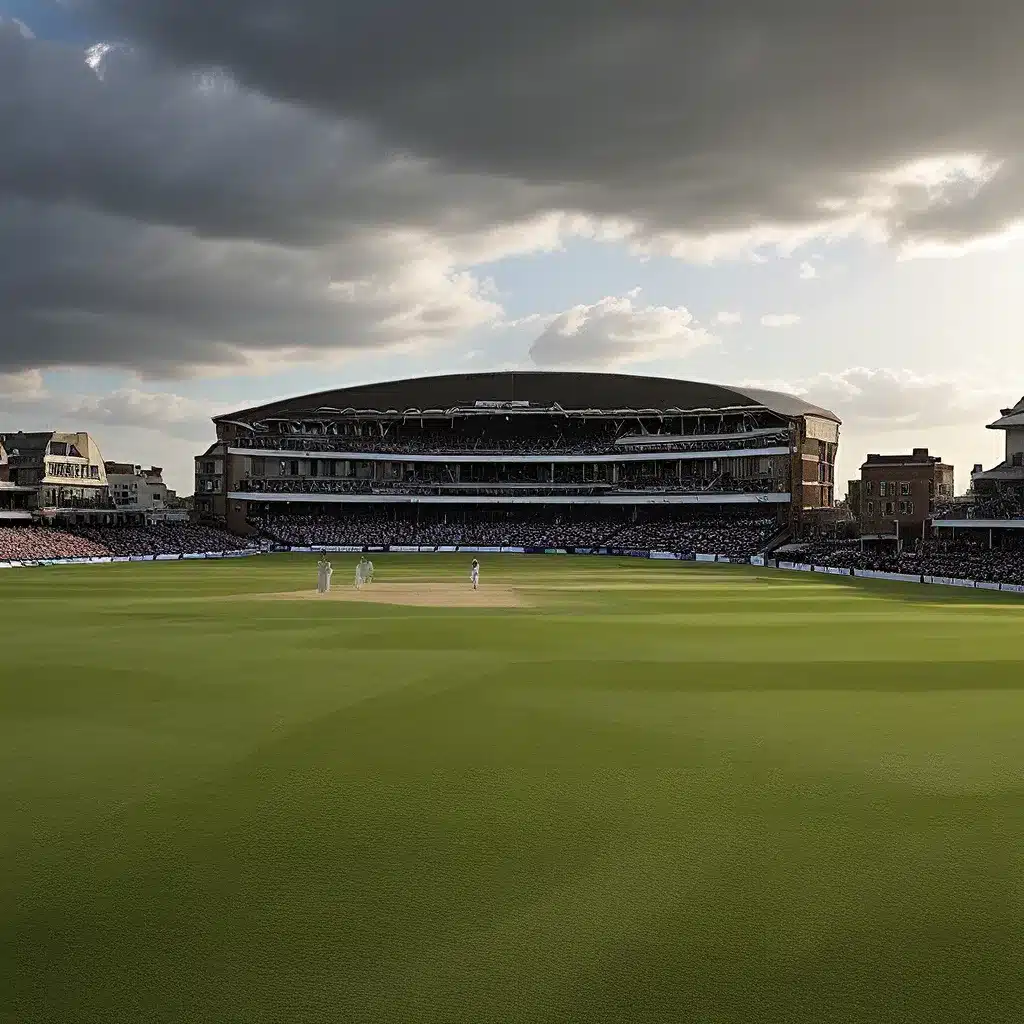
A Storied Venue Steeped in Tradition
Lord’s Cricket Ground, often referred to simply as Lord’s, is widely regarded as the spiritual home of the sport of cricket. Located in the heart of London, this iconic stadium has stood as a hallmark of the game for over two centuries, hosting some of the most memorable and historic matches in the annals of the sport.
Nestled in the affluent neighborhood of St. John’s Wood, Lord’s has been the headquarters of the Marylebone Cricket Club (MCC) since 1814. The MCC, founded in 1787, has played a pivotal role in shaping the laws and regulations of cricket, cementing its status as the game’s governing body. The club’s stewardship of Lord’s has ensured that this hallowed ground remains a bastion of cricket’s rich heritage and tradition.
The origins of Lord’s can be traced back to 1814, when Thomas Lord acquired a plot of land on the edge of Regent’s Park to establish a new cricket ground. The original site, known as the “Old Ground,” was located near the current location, but was later moved to its present-day address at St. John’s Wood Road in 1814. This move marked the beginning of the Lord’s Cricket Ground as we know it today.
The Iconic Pavilion and Surrounding Grounds
The jewel in the crown of Lord’s is undoubtedly the iconic Pavilion, a striking Victorian-era structure that has become synonymous with the ground. Completed in 1890, the Pavilion’s distinctive design, with its red-brick façade and ornate architecture, has become an integral part of the Lord’s experience.
Inside the Pavilion, visitors can immerse themselves in the rich history of the game. The Long Room, a grand hallway adorned with portraits of cricket legends, serves as the nerve center of the MCC’s activities. It is here that players and officials gather before and after matches, imbuing the space with a sense of reverence and tradition.
Surrounding the Pavilion are the various other stands and facilities that make up the Lord’s complex. The Edrich and Compton Stands, named after two of the game’s legendary figures, provide seating for thousands of spectators. The Mound Stand, with its unique sloping design, offers a commanding view of the entire ground.
Beyond the main stadium, Lord’s boasts a range of other facilities that cater to the sport’s diverse needs. The Nursery Ground, located adjacent to the main pitch, serves as a training ground for aspiring cricketers, while the MCC Museum chronicles the evolution of the game through an impressive collection of artefacts and memorabilia.
The Honors and Traditions of Lord’s
Lord’s has long been the stage for some of the most significant and historic moments in cricket. It has hosted numerous Test matches, One-Day Internationals, and T20 Internationals, cementing its status as the premier venue for international cricket.
One of the most revered traditions at Lord’s is the Honours Boards, which display the names of players who have achieved remarkable feats at the ground. The Lord’s Honours Boards are a testament to the exceptional performances of cricketers, with separate boards for batters who have scored centuries and bowlers who have taken five or more wickets in an innings.
Another iconic tradition is the Lord’s Bicentenary Tree, a linden tree planted in 1987 to commemorate the 200th anniversary of the MCC. This living symbol of the ground’s longevity has become a popular spot for cricket enthusiasts to gather and reflect on the game’s rich history.
The Hallowed Turf and Memorable Matches
The cricket pitch at Lord’s is widely regarded as one of the finest in the world. Meticulously maintained by the groundskeeping team, the pitch has played host to some of the most thrilling and captivating matches in the sport’s history.
One such match was the 1950 Test match between England and the West Indies, which saw the West Indies emerge victorious. This historic triumph, led by the legendary spin-bowling duo of Sonny Ramadhin and Alf Valentine, marked the first time the West Indies had won a Test series in England. The match also inspired a renowned calypso tune, “Victory Test Match,” which celebrated the achievements of these “little pals of mine.”
Another memorable moment at Lord’s was the 2019 ICC World Cup Final, where England and New Zealand played out a thrilling contest that was decided in a dramatic Super Over. The match, which ended in a tie, was hailed as one of the greatest cricket matches ever played, showcasing the sheer excitement and unpredictability that Lord’s can deliver.
A Living, Breathing Symbol of Cricket’s Legacy
Lord’s Cricket Ground is not merely a stadium; it is a living, breathing symbol of cricket’s enduring legacy. From its humble beginnings in the early 19th century to its current status as the global epicenter of the sport, Lord’s has witnessed the evolution of the game, adapting and evolving alongside the sport it so proudly represents.
As cricket enthusiasts around the world continue to make the pilgrimage to this hallowed ground, they are not just visiting a sporting venue – they are connecting with the very essence of the game itself. Lord’s stands as a testament to the timeless values of sportsmanship, camaraderie, and the unifying power of the sport, cementing its place as the ultimate stadium journey for any cricket fan.

